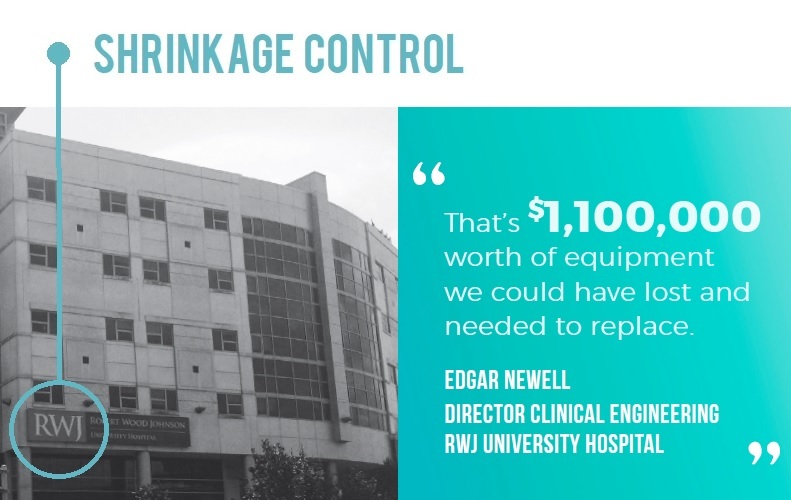
By design, many medical devices are now small and portable. That makes them more mobile and flexible, but it also means they’re more vulnerable to loss. It can happen when a small device gets wadded up in dirty linens and sent down a laundry chute or when it’s accidentally tossed in the trash. Other times, equipment simply “walks out the door” in a patient’s pocket.
Losing a device or two once in a while won’t cripple a healthcare organization. But much like death by a thousand cuts, routine losses over time add up to a big impact. That’s because every loss represents a “double whammy”: the impact of not having the asset available for patient care PLUS the hard-dollar cost to replace it!
Combining Real-time Location System (RTLS) technology with analytics is a proven way to tackle shrinkage. It improves financial and operational results by focusing on two primary goals: preventing equipment from “walking out the door” and analyzing loss history to identify process improvements that can further reduce loss.
At STANLEY Healthcare, we’re helping hospitals across North America tackle those goals with Asset Management solutions based on two enabling technologies—active RFID and RAIN (passive) RFID powered by the Impinj platform.
In upcoming blog posts, I’ll share the story of a hospital that’s using each type of RFID to reduce inventory shrinkage. In the meantime, you might be inspired by the experiences of our customer Robert Wood Johnson (RWJ) University Hospital.
In 2012, RWJ invested in an RTLS solution to improve patient care and throughput in a simulated mass casualty event. With access to the real-time location of assets, staff and patients, the hospital was able to treat 17% more patients in simulated situations. Preparing for mass casualty events might have been the driver of the RTL investment, but it hasn’t been the only benefit. With almost 10,000 assets tagged, RWJ also leverages active RFID for asset management—including shrinkage control. In fact, they’ve recovered an estimated $1,100,000 in equipment.
Without the RTLS solution, RWJ would have not only lost those investments, but also been forced to invest again to replace the missing assets. In the next post, I’ll provide more details on how another hospital is using active RFID to avoid the double whammy of inventory shrinkage. Until then, I encourage you to share your questions and thoughts on the value of reducing shrinkage.
Source: Reducing Shrinkage: A Tale of Two Solutions | STANLEY Healthcare Blog
